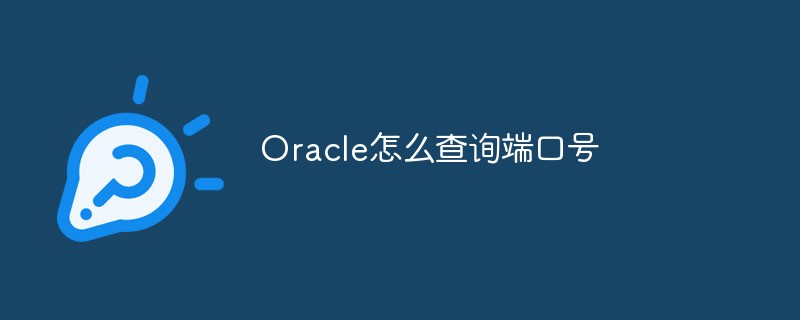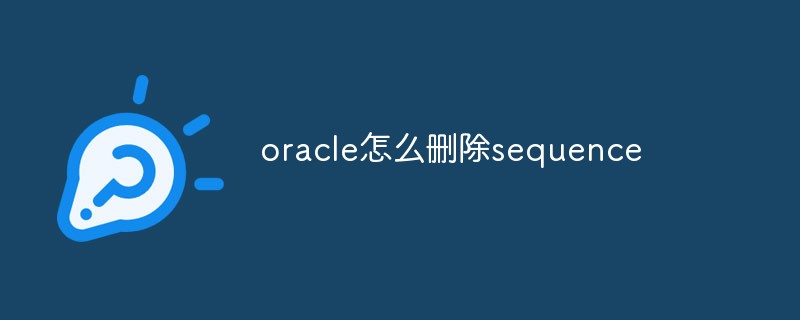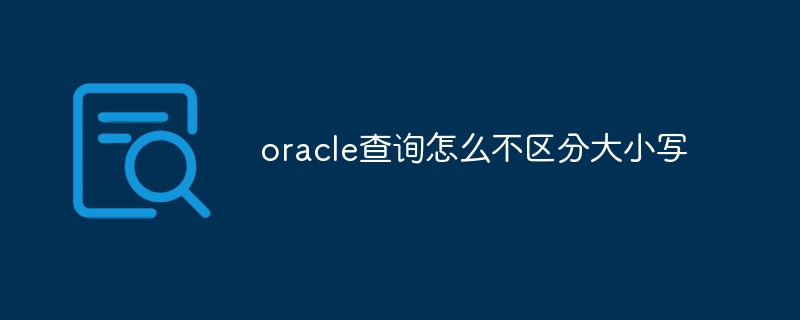 web3.0
web3.0 What are the recent changes in public chain infrastructure such as ETH that are worth paying attention to?
What are the recent changes in public chain infrastructure such as ETH that are worth paying attention to?Written by Lao Bai
Recently in the primary market, the hottest track is undoubtedly AI, followed by BTC, with 80% of the projects discussed every day They are all concentrated in these two tracks. At most, I can talk about 5 or 6 AI projects a day.
It is foreseeable that the AI bubble will reach its peak in the next year. With hundreds of new AI projects coming online, the market value of the AI track will reach its peak. In the end, the bubble will burst. At the same time, unicorns will be born that truly find the convergence point of AI X Crypto, and continue to push this track and the entire industry forward.
So in the current overheated environment of AI, let’s calm down and take a look at the infrastructure level in recent months, especially what changes have occurred in the track of public chain infrastructure? There are some new things worth mentioning.
ETH, or the further deconstruction of the monolithic chain
When Celestia first proposed the concept of modularity and the concept of DA layer, the market actually spent a lot of time to Digest and understand, now this concept has long been deeply rooted in people's hearts, and various RaaS infrastructures have spread to an exaggerated stage where the number of infrastructure > the number of applications > the number of users. (RaaS: the abbreviation of Rollup-as-a-Service refers to providing ready-made Rollup products and services to help application developers quickly start Rollup)
Execution layer, DA layer, settlement There have been some different technical developments in each layer in the past few months, each layer has derived new technical solutions, and even the concept of settlement layer is no longer exclusive to ETH. Let’s briefly talk about representative technologies for each layer.
Execution layer
The most popular concept in the execution layer is undoubtedly parallel EVM, represented by Monad, Sei, MegaETH, FTM, Canto and other existing The project has also begun planning to upgrade in this direction. However, just as not all ZK projects will protect privacy, projects labeled with parallel EVM actually have different technical routes and ultimate goals.
Let’s take a picture of Sei for an intuitive display. Obviously, under optimistic circumstances, changing from the existing sequential processing to parallel processing will still significantly improve the performance. of.

Parallel EVM can actually be divided into several different technical routes:
1) From The perspective of how transactions are parallelized - there is nothing new under the sun, except the difference between a priori and a posteriori
The a priori, represented by Solana and Sui, requires transactions to explicitly state that they modified the chain state Which parts, so that it can be detected in advance whether there is a state conflict (such as access to the same AMM pool) before packaging the block, and if so, these conflicting transactions will be discarded.
Posterior is also called optimistic parallelism, represented by Aptos BlockSTM, that is, it is assumed that there is no conflict among everyone before accepting the transaction, and then testing after execution is completed. If a conflicting transaction is found, declare the transaction invalid, refresh the result, re-execute, and repeat this step until all transactions in the block are executed. Sei, Monad, MegaETH, Canto use similar solutions.
We have also seen parallel solutions in the primary market for state conflict situations (like the same AMM pool access mentioned above), but it seems that the project will be relatively complicated, and I am not sure whether it will be commercially feasible. Feasible, still under evaluation.
2) From the degree of emphasis on parallel EVM - it can also be divided into two schools
One is Monad, represented by Sei, which considers how to trade parallelism as The main expansion idea is that parallelism is the main narrative. For example, in addition to optimistic parallel processing, Monad also has specially developed MonadDB, and asynchronous I/O specifically cooperates with parallel processing.
The other is the idea of Fantom, Solana, and MegaETH. Parallelism is one of the expansion solutions, but it is only one of them. Parallelism is a Auxiliary narrative and performance improvement rely more on other technical solutions.
For example, Fantom’s Sonic upgrade focuses on the FVM virtual machine and the optimized Lachesis consensus mechanism. Solana’s next phase focuses on the modular architecture of Firedancer’s new client, optimized network communication mechanism, signature verification, etc.
MegaETH の目標は、リアルタイム ブロックチェーン を実装することです。 1 つ目は、Paradigm が新たに開発した Reth 高性能クライアント、フルノードの状態同期メカニズム (すべてのデータではなく状態の違いのみを同期)、およびシーケンサーのハードウェア設計 (ストレージを備えた多数の高性能 RAM) に基づいています。状態アクセスのための機能)、遅いディスク I/O の回避)、マークル トライのデータ構造の改善などの側面がさらに最適化および改善されました。 は、ソフトウェア、ハードウェア、データ構造、ディスク IO、ネットワーク通信、トランザクション ソートに相当します。処理の包括的かつ全面的な改善により、EVM のパフォーマンスの上限が限界まで引き上げられ、「リアルタイム ブロックチェーン」に近づきます。
DA レイヤー
DA レイヤーには特に大規模な技術的反復がないため、このトラックのボリュームのレベルは実行レイヤーのレベルよりもはるかに小さいです。主要なプレーヤーはほんのわずかです。
ETH の CallData は Blob にアップグレードされ、各レイヤ 2 のコストは大幅に低下しました。現在、ETH はすでに「安価な」DA です。
Celestia のより大きな役割は、オンライン化後、DA レイヤーの概念を提案する最初のプロジェクトとして、DA トラックを 20 億 FDV の上限から 200 億まで引き上げたことです。 、パターンと想像力を開きます。 多くの新しい Layer2 アプリチェーンに選ばれる DA は、当然ながら Celestia です。 (FDV は「完全希薄化評価」を意味し、トークン価格 * 総額から導出される評価指標です)
Avail は、技術的に言えば、Polygon から独立しています。 「Celestia の強化版」。たとえば、Polkadot の Grandpa BABE コンセンサス メカニズムを使用しており、Celestia の Tendermint と比較して、理論的にはより多くのノードの分散化をサポートできます。また、たとえば、Validity Proof はサポートされていますが、Celestia ではサポートされていません。もちろん、技術的な違いは、環境上の側面よりもはるかに重要ですが、Avail は環境レベルで追いつく必要があります。
EigenDA も、EigenLayer メインネットとともに 2 日前に開始されました。EigenLayer は、このラウンドで最も強力なナラティブ プロジェクトの 1 つであり、商業的な協力が最も可能です。私の個人的な意見ですが、「安全で価格が安い」限り、Validity Proof を使用するか、DAS がサポートするかどうかを気にするプロジェクトはそれほど多くありません。等
次の 3 つの DA は言及する価値があります:1) Near DA
Near It は魔法です。パブリック チェーンはもともとシャーディング用に設計されており、現在も使用されていますが、シャーディングを実行しながら DA も実行します。
Celestia よりも安価で、Layer2 の高速決済もサポートしています。
チェーン抽象化- 最近開始されたチェーン署名により、ユーザーは単一の NEAR アカウント トランザクション署名を通じて任意のチェーンにリクエストできます。
AI- 創設者のイリアは、NVIDIA カンファレンスで Huang Renxun に肩をたたかれた 8 人のトランスフォーマーの 1 人であり、現在 AI エンジニアの雇用を計画しています。来月発売予定 関連発表を投稿…私もDAサーキットに投入した『六角戦士』。
2) BTC&CKBBTC のレイヤー 1 はスマート コントラクトをサポートしておらず、直接決済できないため、現在数十の BTC EVM レイヤー 2 が基本的に変換しています。 BTC
を DA として使用する場合、違いは単に ZK Proof を BTC に直接スローするか、ZK Proof のハッシュをスローするかだけです。これを行わないと自分自身を「BTC Layer 2」と呼ぶことができないかのようです。 最近、私は実際に新しいプロジェクトに遭遇し、「もうふりをしたくない。私はETHレイヤー2で、DA決済はすべてETH上にあるが、私はBTCエコシステムに貢献している!」と言いました。うれしい...
唯一の代替拡張プランは CKB が立ち上げた RGB です。 この枠組みでは CKB は DA のような存在になり、BTC は UTXO 同型バインディングのブラック テクノロジーによりほぼ RGB の決済層になりました。 。3) 新しい DA
私が見た 2 つの新しい DA のアイデアについて、プロジェクト名には触れずにお話します。
1 つは、DA と AI を組み合わせる方法です。もう 1 つは、DA 自体が高性能であることに加えて、大規模な AI モデル、トレーニング データ、トレーニング トラジェクトリーのストレージ レイヤーとしても機能します。 DA の基礎となるエラー修正コード メカニズムは、動的ネットワーク (各ラウンドでいくつかのノードがランダムにオフラインになる) などの不安定な状態において、より堅牢なネットワーク ステータスを提供できます。 決済レイヤー
もともとこのレイヤーはほぼ ETH専用でした。DA は Celestia に競合して独自のレイヤー 2 を実装させました。決済に関してのみ、Solana や Aptos などの他のチェーンにはまだレイヤー 2 がありません。BTC のレイヤー 2 は使用されておらず、BTC を決済に使用することはできません。現時点で考えられる決済レイヤーは ETH だけです。
しかし、この状況は間もなく変わるでしょう。いくつかの新しいプロジェクトがこの記事の冒頭で述べた方向に進み始めています。つまり ZK The です。検証/決済層はETHをさらに分解します(ETHのビジネスを掌握します)。
なぜそのような概念があるのでしょうか? その理由は、ZK Proof を検証するために ETH Layer1 でコントラクトを実行することは理論的には実際には最適な選択ではないためです:
技術的に言えば、ZK Proof の正しさを検証するには、 開発担当者は、ZK プロジェクトと選択した ZK プルーフ システムに基づいて、Solidity に基づいた検証契約を作成する必要があります。その中で、さまざまな楕円曲線のサポートなど、多くの暗号アルゴリズムに依存する必要があります。通常、これらの暗号化アルゴリズムは比較的複雑であり、EVM-Solidity アーキテクチャは、これらの複雑な暗号化アルゴリズムを実装するのに最適なプラットフォームではありません。 一部の ZK プロジェクトでは、これらの検証契約の作成と検証のコストも非常に高くなります。これにより、一部の ZK エコシステムが EVM エコシステムにネイティブに参加することがある程度妨げられます。そのため、Cario、Noir、Leo、Lurk などの ZK 対応言語は、現在、独自の Layer1 でのみ検証できます。同時に、ETH でこれらのものを更新またはアップグレードすると、常に船の向きが変わります。
コスト面では、レイヤー2が支払うDAが支払う「保護費」が大半を占めますが、ZKの契約検証にはGas代もかかり、イーサリアム上での検証は決して安くはありません。オプション。 ETH Gasの料金が時折高騰し「ノーブルチェーン」化することも相まって、検証コストにも大きな影響を与えることになる。
その結果、Nebra に代表される、新しい ZK 検証/決済層コンセプトのプロジェクトがまだ比較的初期段階にあります。ミナや、新たな提案を通過したばかりのゼンなど、いくつかの古いプロジェクトもこの方向に方向転換しています。
このトラックのほとんどのプロジェクトの全体的なアイデアは基本的に次のとおりです:
- 複数の ZK 言語をサポートする
- ZK 集約証明をサポートし、より効率的かつ安価に
- 最終確認時間の短縮
- ZK 決済層と分散化 現在、結局のところ、テクノロジーを活用するには、コンピューティング能力が必要です。いくつかの決済層プロジェクトがプルーフ・マーケット・プロジェクトと連携している場合や、コンピューティング能力を持つ決済層が自らプルーフ・マーケットを直接作成する場合や、技術を熟知したプルーフ・マーケットが単独で決済層パッケージを作成する場合があります。
概要
Oracle および MEV 分野の OEV、相互運用性分野の ZK ライト クライアントなど、インフラストラクチャの他の分野について書かれた記事が多数あるはずです。ここでは詳しく説明しません。次回何か新しくて興味深いものを見つけたら、それを共有します。
The above is the detailed content of What are the recent changes in public chain infrastructure such as ETH that are worth paying attention to?. For more information, please follow other related articles on the PHP Chinese website!
 什么是oracle asmApr 18, 2022 pm 04:16 PM
什么是oracle asmApr 18, 2022 pm 04:16 PMoracle asm指的是“自动存储管理”,是一种卷管理器,可自动管理磁盘组并提供有效的数据冗余功能;它是做为单独的Oracle实例实施和部署。asm的优势:1、配置简单、可最大化推动数据库合并的存储资源利用;2、支持BIGFILE文件等。
 oracle怎么查询所有索引May 13, 2022 pm 05:23 PM
oracle怎么查询所有索引May 13, 2022 pm 05:23 PM方法:1、利用“select*from user_indexes where table_name=表名”语句查询表中索引;2、利用“select*from all_indexes where table_name=表名”语句查询所有索引。
 Oracle怎么查询端口号May 13, 2022 am 10:10 AM
Oracle怎么查询端口号May 13, 2022 am 10:10 AM在Oracle中,可利用lsnrctl命令查询端口号,该命令是Oracle的监听命令;在启动、关闭或重启oracle监听器之前可使用该命令检查oracle监听器的状态,语法为“lsnrctl status”,结果PORT后的内容就是端口号。
 oracle全角怎么转半角May 13, 2022 pm 03:21 PM
oracle全角怎么转半角May 13, 2022 pm 03:21 PM在oracle中,可以利用“TO_SINGLE_BYTE(String)”将全角转换为半角;“TO_SINGLE_BYTE”函数可以将参数中所有多字节字符都替换为等价的单字节字符,只有当数据库字符集同时包含多字节和单字节字符的时候有效。
 oracle怎么删除sequenceMay 13, 2022 pm 03:35 PM
oracle怎么删除sequenceMay 13, 2022 pm 03:35 PM在oracle中,可以利用“drop sequence sequence名”来删除sequence;sequence是自动增加数字序列的意思,也就是序列号,序列号自动增加不能重置,因此需要利用drop sequence语句来删除序列。
 oracle怎么查询数据类型May 13, 2022 pm 04:19 PM
oracle怎么查询数据类型May 13, 2022 pm 04:19 PM在oracle中,可以利用“select ... From all_tab_columns where table_name=upper('表名') AND owner=upper('数据库登录用户名');”语句查询数据库表的数据类型。
 oracle查询怎么不区分大小写May 10, 2022 pm 05:45 PM
oracle查询怎么不区分大小写May 10, 2022 pm 05:45 PM方法:1、利用“LOWER(字段值)”将字段转为小写,或者利用“UPPER(字段值)”将字段转为大写;2、利用“REGEXP_LIKE(字符串,正则表达式,'i')”,当参数设置为“i”时,说明进行匹配不区分大小写。
 Oracle怎么修改sessionMay 13, 2022 pm 05:06 PM
Oracle怎么修改sessionMay 13, 2022 pm 05:06 PM方法:1、利用“alter system set sessions=修改后的数值 scope=spfile”语句修改session参数;2、修改参数之后利用“shutdown immediate – startup”语句重启服务器即可生效。

Hot AI Tools

Undresser.AI Undress
AI-powered app for creating realistic nude photos

AI Clothes Remover
Online AI tool for removing clothes from photos.

Undress AI Tool
Undress images for free

Clothoff.io
AI clothes remover

AI Hentai Generator
Generate AI Hentai for free.

Hot Article

Hot Tools

MantisBT
Mantis is an easy-to-deploy web-based defect tracking tool designed to aid in product defect tracking. It requires PHP, MySQL and a web server. Check out our demo and hosting services.

PhpStorm Mac version
The latest (2018.2.1) professional PHP integrated development tool

VSCode Windows 64-bit Download
A free and powerful IDE editor launched by Microsoft

Notepad++7.3.1
Easy-to-use and free code editor

Atom editor mac version download
The most popular open source editor






